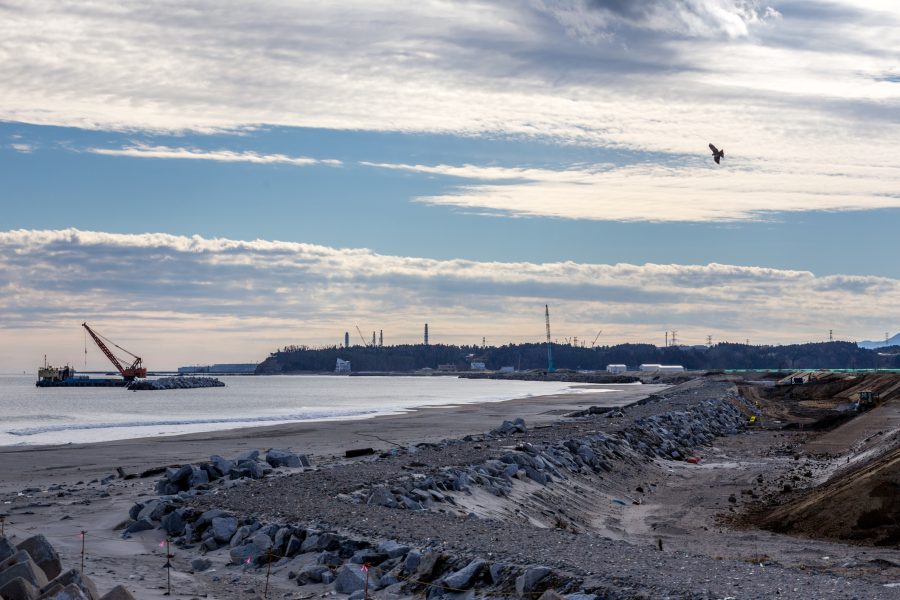
Japan: Fukushima fish with 180 times legal limit of radioactive element triggers concerns

A fish living near drainage outlets of Japan‘s Fukushima Daiichi nuclear power plant contained levels of radioactive cesium that are 180 times the country’s safety limit, according to a report on Monday (July 24).
The black rockfish caught on May 18 was found by plant operator Tokyo Electric Power Company (TEPCO) to have 18,000 becquerels per kg of cesium-137, compared with the legal maximum level of 100 becquerels per kg, a report in Britain’s newspaper Guardian said.
Contaminated water
The government and TEPCO have struggled to manage the massive amount of contaminated water accumulating since the 2011 nuclear disaster.
Watch: South Korean lawmakers protest in Japan on Fukushima water release; issue explained
They say the plan is to treat the water, dilute it with more than a hundred times the seawater and then release it into the Pacific Ocean through an undersea tunnel.
This, they said, is safer than national and international standards require.
But despite the UN’s International Atomic Energy Agency’s (IAEA) approval, there are soaring international concerns.
Also read: Author Murakami bitter about redevelopment of historic Tokyo park
What Japan says
Japan says its plan to pump out treated wastewater from the damaged Fukushima nuclear power plant will meet international safety standards but many Japanese as well as South Koreans and Chinese are unhappy.
The release of 1.3 million tonnes of contaminated water from the 2011 tsunami-hit Fukushima Daiichi nuclear power plant is expected to take place within weeks.
Residents say this is bound to cause another setback to Fukushima’s image and hurt their businesses and livelihoods.
“Without a healthy ocean, I cannot make a living.” said Yukinaga Suzuki, a 70-year-old innkeeper at the Usuiso beach in Iwaki, about 50 km (30 miles) south of the plant.
“If you ask me what I think about the water release, I am against it. But there is nothing I can do to stop it as the government has one-sidedly crafted the plan and will release it anyway,” he said.
Asian concerns
Hong Kong has threatened to ban food imports from 10 Japanese prefectures if the water release goes ahead as planned.
China has begun blanket radioactivity testing of Japanese seafood imports, leading some wholesalers to stop handling such produce from Japan.
Groups in South Korea have also raised concerns. Hundreds have marched in South Korea’s capital demanding that Japan scrap its plans to release treated wastewater.
The protests came a day after Seoul formally endorsed the safety of the Japanese plans.
A total of 44 fish with cesium levels above 100 becquerels per kg have been found in the Fukushima plant port between May 2022 and May 2023, Tepco confirmed, with 90 per cent of those caught in or near the inner breakwater.
Other specimens identified as having particularly high radioactivity were an eel with 1,700 becquerels per kg, caught in June 2022, and rock trout, with 1,200 becquerels in April 2023.
2011 accident
The March 2011 earthquake and tsunami destroyed the Fukushima Daiichi plant’s cooling systems, causing three reactors to melt and contaminating their cooling water, which has since leaked continuously.
The water is collected, filtered and stored in some 1,000 tanks, which will reach their capacity in early 2024.
The government and TEPCO say the water must be removed to make room for the plant’s decommissioning, and to prevent accidental leaks from the tanks because much of the water is still contaminated and needs retreatment.
Local fishing was returning to normal operation in 2021 when the government announced the water release plan.
Japanese fishing bodies strongly oppose Fukushima’s water release as they worry about further damage to the reputation of their seafood as they struggle to recover.
Scientists generally agree that environmental impact from the treated water would be negligible, but some call for more attention on dozens of low-dose radionuclides that remain in the water.
(With agency inputs)

